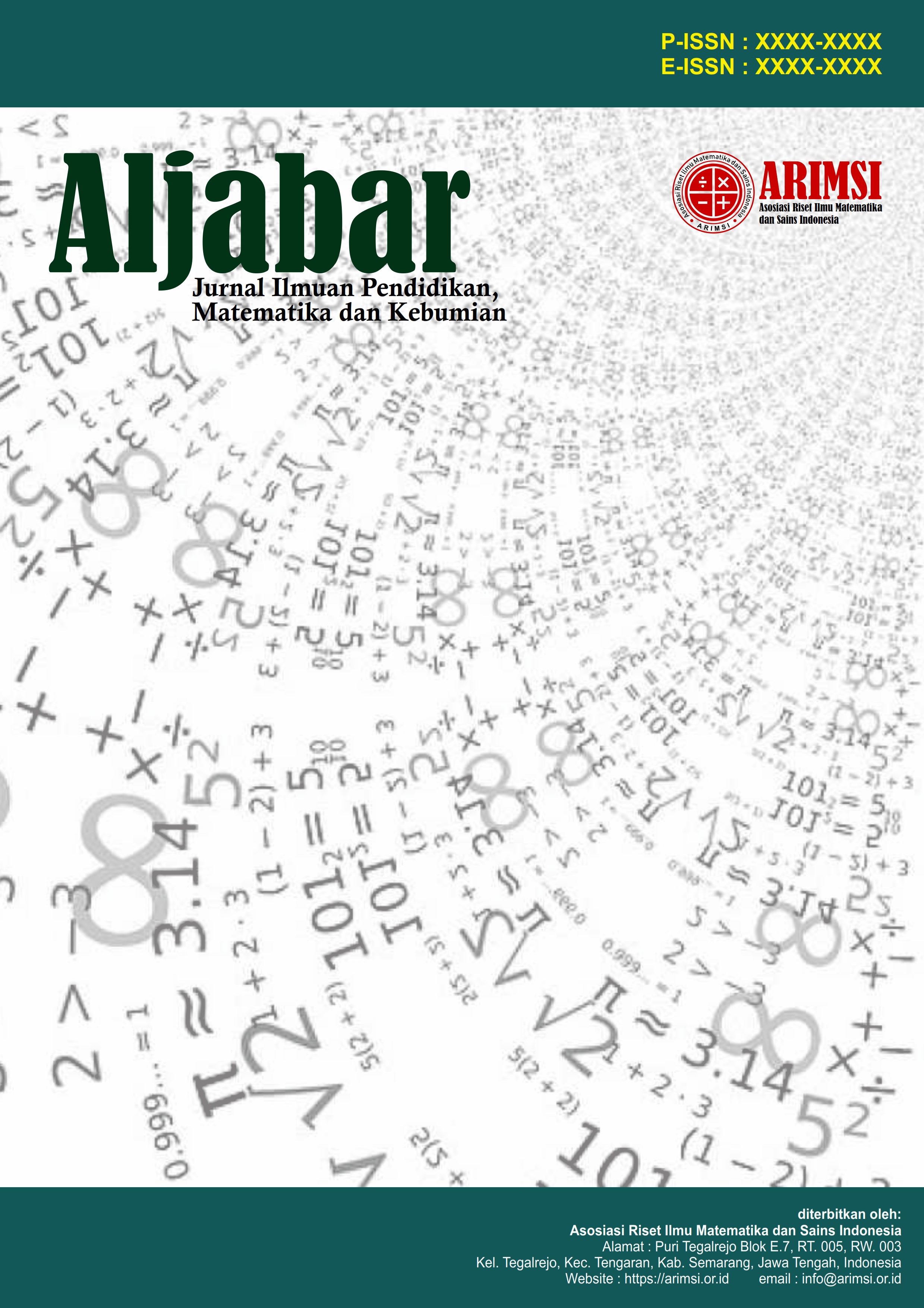Pengembangan Desain Pembelajaran Blended Learning dan Media Interaktif Pengukuran Berat Benda di Sekolah Dasar
DOI:
https://doi.org/10.62383/aljabar.v1i2.555Keywords:
Blended Learning, Interactive Media, Measuring the Weight of Objects, Mathematics LearningAbstract
This research is motivated by the need for innovation in mathematics learning in elementary schools, especially regarding material measuring the weight of objects which is often considered abstract by students. The aim of this research is to develop a learning design based on blended learning combined with interactive media to increase understanding of concepts and student involvement in the learning process. The research method used is Research and Development (R&D) with the ADDIE (Analysis, Design, Development, Implementation, Evaluation) development model. The findings show that the learning design developed is classified as very feasible and effective based on the assessment of material experts, media, as well as the results of limited trials in the field. The use of interactive media in a blended learning approach has been proven to significantly increase students' learning motivation and understanding of concepts. The implications of this research indicate that the integration of digital technology in mathematics learning in elementary schools can be an eee3werfgfdzxczalternative solution to create a more interesting, interactive and meaningful learning experience.
Downloads
References
Abdullah, M. I., Inayati, D., & Karyawati, N. N. (2022). Nearpod use as a learning platform to improve student learning motivation in an elementary school. Journal of Education and Learning (EduLearn), 16(1), 121–129. https://doi.org/10.11591/edulearn.v16i1.20421
Andani, S. R., Sari, S. Y., Akmam, A., & Sundari, P. D. (2023). The urgency of interactive learning media in improving students’ physics learning outcomes. Jurnal Ilmiah Profesi Pendidikan, 8(4), 2415–2419. https://doi.org/10.29303/jipp.v8i4.1814
Andolsek, K. M., Gme, F., & Simpson, D. (2017). Direct observation reassessed. Academic Medicine, 92(August), 531–532.
Benta, M. G. (2024). Blended learning using PhET and props to improve students' concept understanding. Jurnal Pendidikan Fisika dan Teknologi, 8(1), 20–24.
Cahyani, V. D., Maryani, M., & Nuraini, L. (2024). The effect of the blended learning model based on the Nearpod application on students’ physics interest and learning outcomes at MAN. Jurnal Pendidikan Fisika dan Teknologi, 10(1), 36–43. https://doi.org/10.29303/jpft.v10i1.6535
Daniel, Y., Banjarnahor, M., & Tarigan, D. (2023). Nearpod-based interactive learning media in improving learning outcomes of class V elementary school students. Jurnal Media Pembelajaran Interaktif, 2(6), 767–778.
Dogan Coskun, S., & Isiksal Bostan, M. (2022). Comparison of pre-service elementary teachers’ mathematical knowledge in teaching for length measurement: Turkey and the United States. Pedagogical Research, 7(1), em0113. https://doi.org/10.29333/pr/11517
Earning history often considered as the subject is dry and monotonous by some big participant educate. (2024). Journal of Education, X(X), 822–828. (Judul dan nama jurnal perlu diklarifikasi)
Hidayat, I., Nur Naziha, & Atmaranie Dewi Purnama. (2022). Increased learning outcomes in effective learning models application according to the Plomp. JLE: Journal of Literate of English Education Study Program, 3(2), 41–45. https://doi.org/10.47435/jle.v3i02.1343
Hrastinski, S. (2019). What do we mean by blended learning? TechTrends, 63(5), 564–569. https://doi.org/10.1007/s11528-019-00375-5
Kadwa, M. S., & Alshenqeeti, H. (2020). The impact of students’ proficiency in English on science courses in a foundation year program. International Journal of Linguistics, Literature and Translation (IJLLT), 3(11), 55–67. https://doi.org/10.32996/ijllt
Kusuma, D., Murtono, & Utomo, S. (2022). The effectiveness of blended learning assisted by interactive PowerPoint on student achievement of elementary school students in Bintarum Group, Demak District. ANP Journal of Social Science and Humanities, 3(2), 47–53. https://doi.org/10.53797/anp.jssh.v3sp2.6.2022
Mazhar, S. A., Anjum, R., Anwar, A. I., & Khan, A. A. (2021). Methods of data collection: A fundamental tool of research. International Journal of Innovation Scientific Research and Review, 10(1), 6–10.
Nasution, M., & Lailia, H. (2023). “Animated video media”: Improved conceptual understanding and solving mathematical problems. AKSIOMA: Jurnal Program Studi Pendidikan Matematika, 12(1), 1344. https://doi.org/10.24127/ajpm.v12i1.6892
No title. (2023). Journal Unknown, 9(September). (Judul dan jurnal perlu diperjelas)
No, V. (2022). Pengembangan bahan ajar tematik untuk pembelajaran blended learning berbantuan aplikasi. Jurnal Cakrawala Pendas, 8(4), 1296–1307.
Oktaviani, N. H., & Lena, M. S. (2022). Application of problem-based learning (PBL) model to improve learner learning outcomes in integrated thematic learning. Jurnal Pendidikan, 30(C), 236–243.
Pendidikan, J., Sekolah, G., Pendidikan, F. I., & Semarang, U. N. (2020). Pengembangan multimedia interaktif flash berbasis problem-based learning pada muatan pelajaran IPA kelas V SDN Kalibanteng Kidul 02 Semarang. (Perlu penyesuaian identitas penulis dan jurnal)
Penelitian, J., & Ipa, P. (2025). Implementation of problem-based learning to improve students’ motivation. Jurnal Penelitian Pendidikan IPA (JPPIPA), 11(1), 1099–1105. https://doi.org/10.29303/jppipa.v11i1.10049
Practices, L., & Aravind, B. S. (2024). Exploring the challenges and opportunities of blended learning in a technology-enabled education environment. Journal of Learning Practices, 1, 10–19.
Program, J., & Pendidikan, S. (2023). (Judul artikel dan jurnal tidak lengkap – perlu diklarifikasi) Jurnal Pendidikan, 12(3), 2712–2725.
Rahmadhani, M., & Supriadi, S. (2023). Developing digital-based speaking literacy assessment using PLOMP model to support the national literacy movement. IDEAS: Journal on English Language Teaching and Learning, Linguistics and Literature, 10(2), 2251–2260. https://doi.org/10.24256/ideas.v10i2.3290
Sitepu, E. G., & Siregar, T. M. (2023). Development of learning animation videos using the Sparkol Videoscribe application to improve students’ understanding of mathematical concepts at SMPS Sultan Iskandar Muda. Jurnal Teknologi Pendidikan dan Pembelajaran, 2(1), 287–302.
Susilowati, S., Hidayati, D., Jannah, F. B. F., & Rahayu, A. P. (2022). Pembelajaran interaktif melalui model blended learning di sekolah dasar. Jurnal Basicedu, 6(2), 2747–2753. https://doi.org/10.31004/basicedu.v6i2.2475
Tomas, L., Evans, N. S., Doyle, T., & Skamp, K. (2019). Are first year students ready for a flipped classroom? A case for a flipped learning continuum. International Journal of Educational Technology in Higher Education, 16, Article 5.
Virdinarti Putra, L., & Yulfani, S. (2022). Implementation of blended learning model using the Schoology application. KnE Social Sciences, 7(19), 534–546. https://doi.org/10.18502/kss.v7i19.12473
Wulandari, I., Alim, J. A., & Putra, M. J. A. (2022). Pengembangan video animasi materi pengukuran panjang dan berat untuk siswa kelas II sekolah dasar. Jurnal Obsesi: Jurnal Pendidikan Anak Usia Dini, 6(6), 7078–7092. https://doi.org/10.31004/obsesi.v6i6.2633
Downloads
Published
How to Cite
Issue
Section
License
Copyright (c) 2025 Aljabar : Jurnal Ilmuan Pendidikan, Matematika dan Kebumian

This work is licensed under a Creative Commons Attribution-ShareAlike 4.0 International License.





